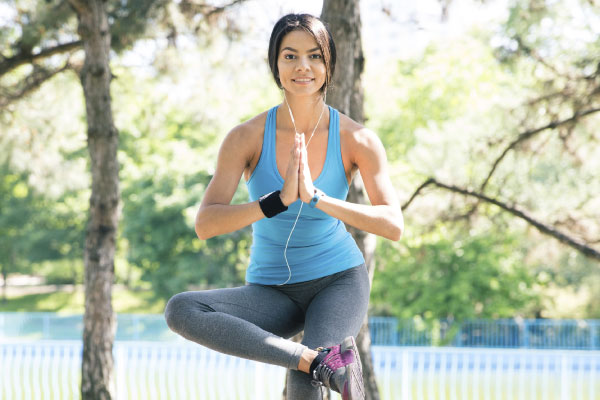Some things we all know are good for us, others can come as a bit of a surprise. The ACSM (American College of Sports Medicine) Health & Fitness Journal Worldwide Survey of Fitness Trends for 2016 studied almost 3,000 responses to discover the top 10 ways we’ll be getting fit this year.
Top of the list was wearable technology using fitness trackers, such as Garmin, Misfit and Fitbit, smart watches, heart rate monitors and GPS tracking devices.
Next came body weight training. Relatively inexpensive, these programmes use minimal equipment, relying instead on the body’s own weight to provide resistance training.
High-intensity training was a huge buzz phrase in the last few years and was number one on the 2015 list. Involving short bursts of high-intensity exercise followed by a short period of rest or recovery, it drew concerns from many in the fitness industry over possible injuries but, with the promise of quick results and short workout times, it remains popular despite dropping into third place.
Traditional strength training using weights remains popular, in fourth place, but it is also being used more often alongside other forms of exercise as part of wider training and rehabilitation programmes.
More of us will apparently be using educated, certified and experienced professionals to help us get fit this year; a trend that comes at number five on the list and is no surprise given the number of accreditations now available. This ties in with personal training, at number six, with more of us also expected to employ trainers in our homes or gyms and even as part of community groups.
 The next two entries on the list are also linked, with functional fitness, replicating actual physical activities someone might do as a function of her daily routine, coming in at number seven. This is defined as using strength training to improve balance, coordination, force, power and endurance to enhance a person’s ability to perform the activities of daily living. Health and fitness professionals often combine it with, number eight, fitness programmes for older people which, again, can be used to improve health, stability and longevity in an aging population.
The next two entries on the list are also linked, with functional fitness, replicating actual physical activities someone might do as a function of her daily routine, coming in at number seven. This is defined as using strength training to improve balance, coordination, force, power and endurance to enhance a person’s ability to perform the activities of daily living. Health and fitness professionals often combine it with, number eight, fitness programmes for older people which, again, can be used to improve health, stability and longevity in an aging population.
Coming is surprisingly low on the list, at number nine, is the combination of exercise and weight loss. It seems there is a trend towards emphasising calorie restriction alongside fitness training, with various organisations encouraging the combination.
The final top 10 entry is yoga which, in its many and varied forms, seems to reinvent itself each year to stay an attractive form of exercise suitable for those of all fitness levels.
Trends which made the second half of the list were: group personal training, worksite health promotions, wellness coaching, outdoor activities, sport-specific training, flexibility and mobility rollers, Smartphone exercise apps, circuit training, core training and outcome measurements.
While the list doesn’t provide any great shocks, the emergence of wearable technology in first place does show that more and more of us are making fitness a way of life and seeing exercise in relation to what we eat, how we sleep and bodily functions such as heart rate and blood pressure.
There is also a message that weights, contrary to some women’s belief that they will end up looking like East German shot putters, are actually our friends, building strength and stamina and even helping us live longer.
No matter how you choose to exercise in 2016, the important thing to remember is that there’s an activity for everyone, no matter what your age or fitness level. Get up and get going, we promise you’ll enjoy it – eventually!





































